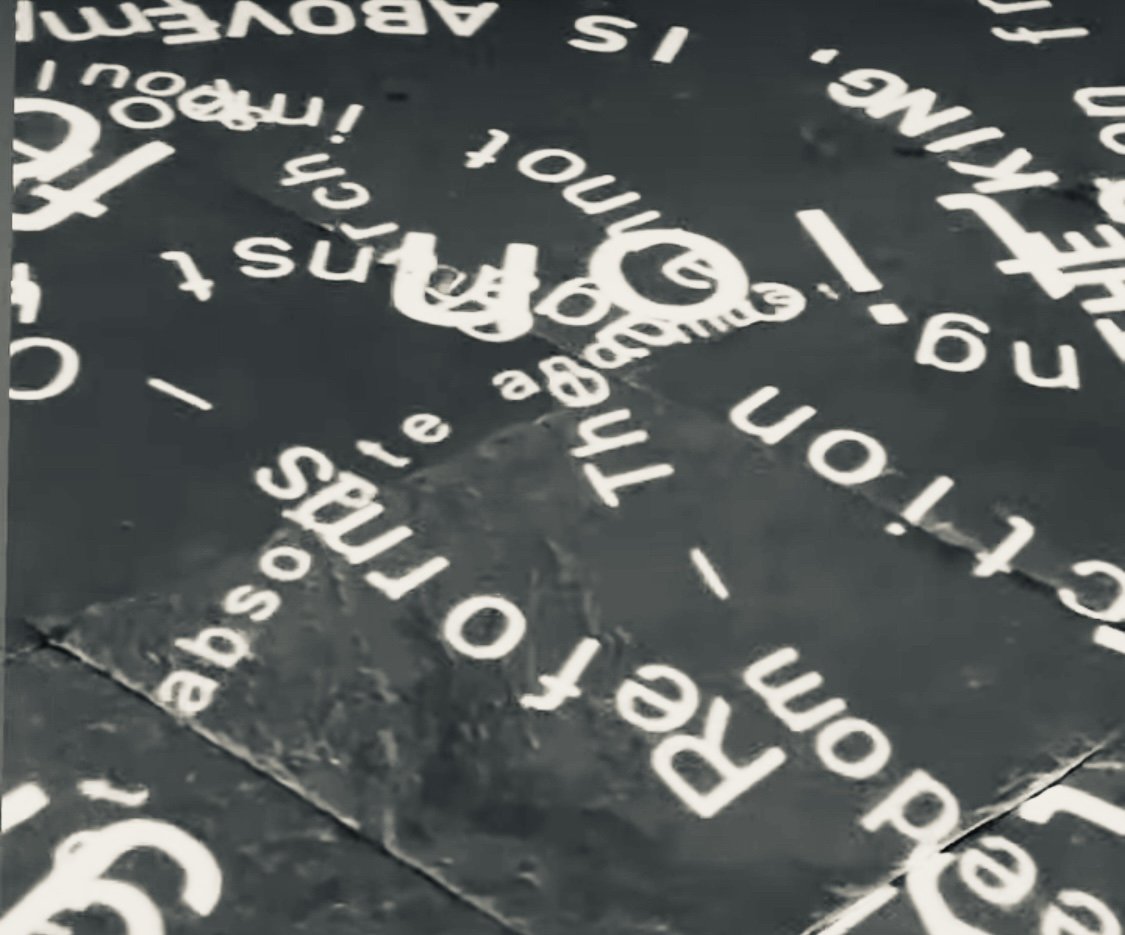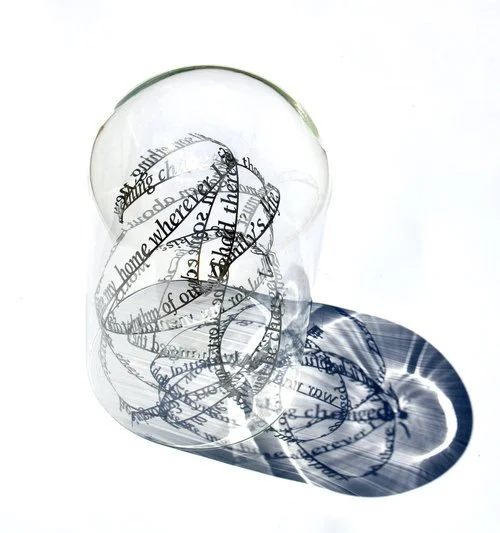Glass sphere, photographed on macro lens with a landscape refracted inside it.
I have been pondering some of the collections that I assembled as a young child. I had a collection of trinket boxes, and inside each box was another collection of something else. One of my favourites was the tiny glass balls used as seals in old-fashioned fountain pen ink cartridges - commonly referred to as "ball seals". These ball seals serve a specific purpose in vintage or traditional fountain pen ink cartridges, positioned at the neck of the ink cartridge, acting as a barrier that seals the ink reservoir until it is punctured by the pen's feed mechanism. I have wondered if the glass ball also helps to keep the pigments within the ink fully mixed and dispersed.
Image of ink swirls courtesy of Adrian Ledoux
As I write I still have a collection of these little transparent spheres, often frosted and some stained with ink, on my desk in front of me. Nearby in my art studio I also have a box of shattered safetly glass that I picked up near a bus stop (being fascinated with the fragmented pattern of the cracks), which sits alongside a series of artworks I made last year from broken glass vessels which I glued back together to encapsulate the stories of Ukranian refugees. It strikes me that I have always been fascinated by transparency, and by the tiny fragments which come together or signal something more significant over time.
During my time studying I used a lot of clear resin to encapsulate objects. I moved on from resin about 12 years ago after I had got tired of the toxic fumes and sticky process, and being privileged to by that stage to have begun being invited to hang my sculptures in massive spaces such as temples, town halls, building foyers and atriums - these airy spaces became the transparent ‘medium’ in which my art became suspended and encapsulated.
In smaller scale works, which I still make, I use glass domes and glass vessels to contain sculptures within. I always think of these smaller table-top pieces such as my ‘Unexpected Happiness series’ as versions of my artwork which work as mini sculptures but could equally be scaled up to epic proportions, filling the turbine hall of the Tate or the centre of a public space.
When I think of my 9 year old self starting to learn handwriting with a fountain pen, and becoming obsessed by these little spheres, (which I also gathered from patient and bewildered friend’s cartridges), I am astounded that even back then, I was aesthetically drawn to these little objects. Still in the present moment they sum up my visual aesthetic as well as many of the themes and concepts which motivate my work as a professional artist: The ephemerality of the material in its tininess and its transparency, the organic curves and the beauty of the circle of sphere, the way they seem to mark a passage of time, or at least the passage of a number of words spilling forth from the pen. The act of writing, storytelling, and sending messages. The chapters and passages that they each represent.











